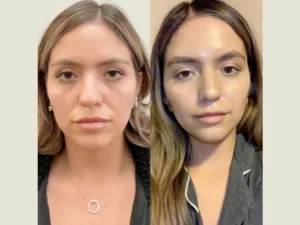
In today’s healthcare world, many clinics and hospitals are turning to technology for help. One of the biggest changes is the rise of virtual medical assistant, who support doctors and nurses with administrative tasks like scheduling, reminders, billing, and even patient communication. While these digital assistants offer huge advantages, there’s one important rule they must follow: HIPAA. Understanding how these assistants fit into HIPAA compliance is something every medical practice must know.
What is HIPAA and Why It Matters
HIPAA stands for the Health Insurance Portability and Accountability Act.
It’s a law that protects patient privacy and ensures that sensitive health information stays safe and secure. If a healthcare provider shares patient data without proper safeguards, they could face serious legal trouble.
The Role of Virtual Medical Assistants
Virtual medical assistants are not robots; they are real people or AI-powered tools.
They handle non-clinical work like managing appointments, answering calls, and updating records. By doing so, they give medical staff more time to focus on patient care.
Why HIPAA Applies to Virtual Assistants
Even though virtual assistants don’t treat patients, they often access private data.
This could include medical history, contact details, or insurance information. Any assistant who views, sends, or stores this data must follow HIPAA rules to keep it safe.
Common HIPAA Violations to Avoid
Understanding how mistakes happen helps prevent them.
Some common issues include sending patient info through unencrypted emails, using personal phones for work, or not securing login details. These are all violations under HIPAA.
Business Associate Agreements (BAAs) Are a Must
Virtual medical assistants are considered business associates under HIPAA.
This means your practice must sign a Business Associate Agreement (BAA) with them. The BAA outlines how they will handle patient information and hold them accountable for any breaches.
Secure Communication Channels
Data should never be shared through regular text messages or open emails.
Instead, practices should use secure platforms with encryption, strong passwords, and multi-factor authentication when working with virtual medical assistants.
Importance of Proper Training
Even the best tools fail if users don’t know the rules.
Every virtual assistant for medical practice must go through HIPAA training. They need to understand what protected health information (PHI) is and how to avoid risky behavior.
Physical and Technical Safeguards
Security goes beyond passwords and logins.
There should be physical protections (like secure servers) and technical measures (like automatic logouts) to stop unauthorized access to patient data.
Role-Based Access Control
Not every assistant needs access to everything.
Practices should assign access only to the data necessary for the assistant’s role. This limits the risk of accidental or intentional breaches.
Cloud Storage and Data Encryption
Cloud services must meet HIPAA standards too.
If a virtual assistant stores data in the cloud, that storage must be encrypted and meet all security requirements. Always verify that cloud providers are HIPAA-compliant.
Handling Breaches Correctly
Mistakes can happen, even with safeguards in place.
If a breach occurs, the assistant and the practice must notify the affected patients and possibly the Department of Health and Human Services (HHS), depending on the size of the breach.
Vetting Your Virtual Assistant Provider
Don’t just hire the first assistant you find.
Make sure the company or individual you choose has experience with HIPAA, offers signed BAAs, and uses secure tools and procedures. Ask for client reviews and certifications if possible.
Ongoing Monitoring and Reviews
Staying compliant is a continuous process.
Practices should conduct regular audits of their systems and assistants. This includes checking access logs, updating passwords, and reviewing policies at least once a year.
Telehealth and Virtual Assistants
With telehealth growing fast, assistants often support virtual appointments.
They may help schedule calls, send reminders, or manage follow-ups. All of this must also follow HIPAA rules, especially when video platforms are used.
International Virtual Assistants
Some virtual assistants are located outside the U.S.
If you hire someone internationally, make sure they understand and follow HIPAA laws. This may require extra training and more careful oversight to ensure compliance.
When AI Is Involved
Some virtual assistants use artificial intelligence (AI).
AI can help with sorting records or auto-responding to patient queries. But the AI tools used must also meet HIPAA standards and should not store or share unprotected data.
Red Flags That Signal Risk
Pay attention to warning signs that could indicate poor security.
This might include assistants using personal email accounts, refusing to sign a BAA, or lacking knowledge about PHI. These are major red flags.
What Patients Should Know
Patients often don’t realize someone outside the clinic is helping.
Being transparent with patients about who accesses their data and how it’s protected helps build trust and shows that the clinic values privacy.
The Future of Secure Virtual Assistance
The demand for virtual assistants will only grow.
As technology improves, so must the systems that protect patient data. Practices that stay informed and proactive will stay ahead of any problems.
Conclusion
Virtual medical assistants are changing the way healthcare works by saving time and improving patient care. But with these changes come new responsibilities, especially around data security. By understanding HIPAA, training staff, and using secure systems, medical practices can protect their patients and avoid costly mistakes. In today’s digital world, staying compliant isn’t just smart—it’s essential.
Virtual medical assistant and virtual assistant for medical practice services offer great support, but only if used with care and responsibility.




